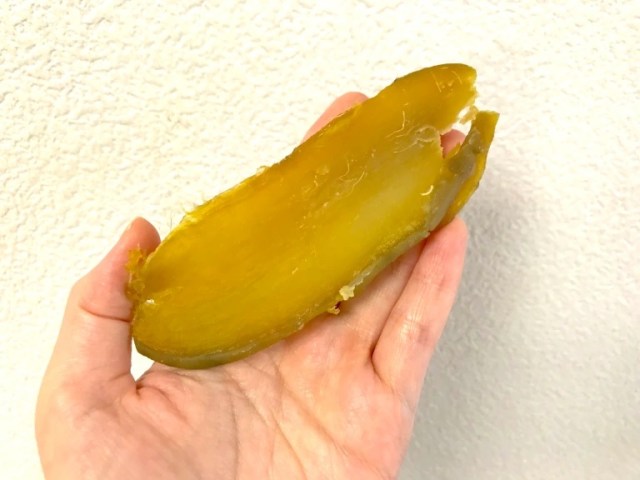
Making one of Japan’s favorite snacks is a slow and easy process.
Japan loves sweet potatoes, especially in the fall when they’re in season. The most popular way to enjoy them is as roasted sweet potatoes, or yaki-imo as they’re called in Japanese, but Japan also has an alternative sweet spud snack named hoshi-imo, or dried sweet potato.
As unabashed lovers of both sweet stuff and traditional Japanese cuisine, hoshi-imo show up on our shopping list pretty frequently. As much as we love hoshi-imo, though, we’re often surprised at how expensive they are. On our last grocery store visit, for example, the shop had the packs below on offer, with hoshi-imo made with extra-sweet bani harkua sweet potatoes costing almost 1,000 yen (US$7.20), and even more ordinay varieties costing about 400 per pack.
Meanwhile, you can get a whole beni haruka sweet potato for about 300 yen. So we started wondering if we could just make our own hoshi-imo, and it turns out it’s a really simple process! Aside from the sweet potatoes, all you need is a steamer, a pair of cloth work gloves or hand towel, and a hanging drying net, of the sort you can get at Daiso or other 100 yen shops.
Once you’ve got all that, though, the next thing you need to do is to check the weather report. In order to transform your sweet potato into hoshi-imo, you’re going to need to let it dry for three days, and maybe even as much as a week. Obviously, the more sunshine there is the quicker the process will go, so we started making our hoshi-imo when the forecast predicated three days of sunny weather ahead.
The first step in the kitchen is to steam the sweet potatoes, with their skins still on, on low heat for one to two hours. You’ll know they’re ready when you can stick a toothpick or skewer through the potato smoothly and easily.
Then it’s time to remove the skin. You’ll want to do this right away, since once the potatoes cool down again the skin becomes harder to remove. Of course, the fact that you just spent an hour or two steaming them means the sweet potatoes are going to be piping hot, which is why you’ll want to use gloves or a towel. The skin will basically peel right off, but you do not want to make the mistake we did of using a plastic bag as a kitchen substitute and scalding our palms.
▼ Searing hand pain = blurry photos
Next you’ll need to slice the sweet potatoes into strips about 1 centimeter (0.4 inches) thick. Thankfully, it’s better to wait until the potatoes have cooled down before you start cutting, which took about 30 minutes.
By the way, if you’re wondering if you can just peel the raw sweet potatoes so you don’t have to worry about their heat, that’s not recommended. Steaming the potatoes in a skinless state makes them take in too much water vaper and turns them soggy.
Even with leaving the skins on for steaming, though, the sweet potatoes get very soft in texture. Japanese sweet potatoes have an especially high natural sugar content, so they sort of caramelize when heated.
But with some careful knife work, we managed to get everything sliced into strips, and then it was time to place them in the drying net and play the waiting game.
Like we mentioned above, it can take anywhere from three to seven days for the sweet potato to dry.
The way you can test to see if they’re ready is to take a piece and bend it lengthwise.
If it can fold in half like this without crumbling or tearing…
…then it’s ready to eat!
So how did our batch taste? Good. After three full days of drying, we had a pile of proper hoshi-imo, and at a fraction of what it would have cost us to buy that much pre-made at the store.
However, we have to admit that our hoshi-imo weren’t quite as sweet as professionally made store-bought varieties. We’re not sure if that’s because they use higher quality potatoes than what we could get our hands on at the supermarket, have a more sophisticated drying setup, or some other factors are at play.
The biggest difference here, though, is how much of a time savings store-bought hoshi-imo are. Making your own dried sweet potatoes doesn’t involve a lot of active prep time – setting up the steamer only takes a few seconds, and the peeling and slicing are both pretty quick processes as well. From start to finish, though, you’re looking at about three hours from when you start steaming until you have the sweet potato slices in the net, and at least three days after that until they’re ready to eat.
On the other hand, there’s a certain satisfaction then comes from making your own all-natural snacks, along with the unique slow-life appeal of the eventual reward for your patience. Plus, if you happen to live in a part of the world where you’ve got access to sweet potatoes but your local shops don’t have hoshi-imo, waiting three days for them to dry is probably still quicker than waiting until you next trip to Japan. Oh, and if you’ve got your heart set on making roasted sweet potatoes instead, we’ve got a new way to do that too.
Reference: Tebunuma
Photos ©SoraNews24
● Want to hear about SoraNews24’s latest articles as soon as they’re published? Follow us on Facebook and Twitter!

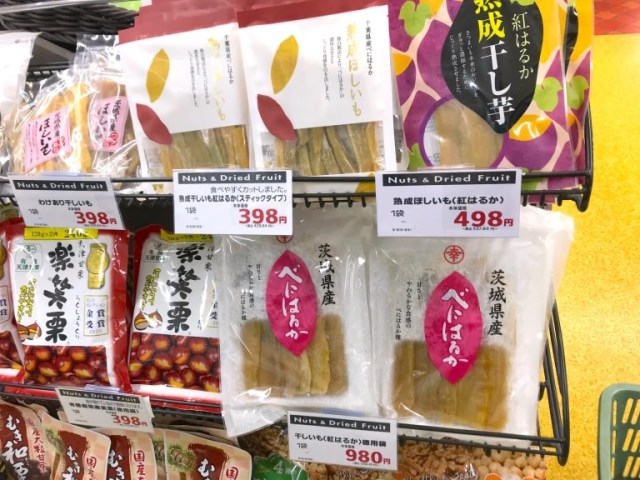
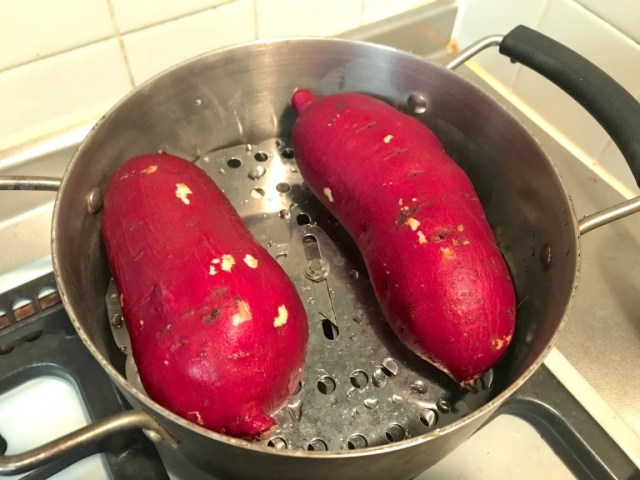
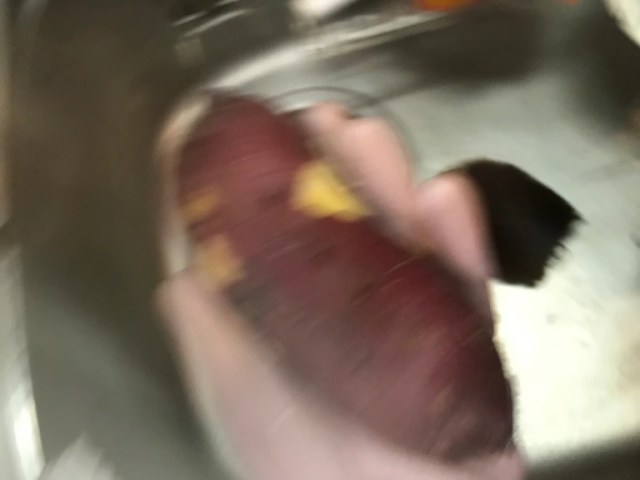
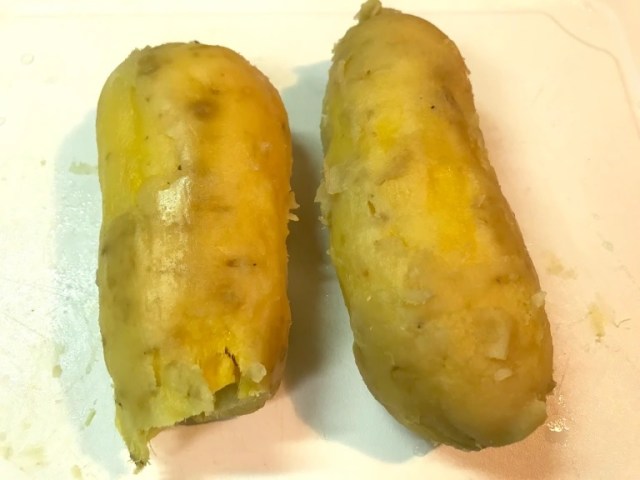
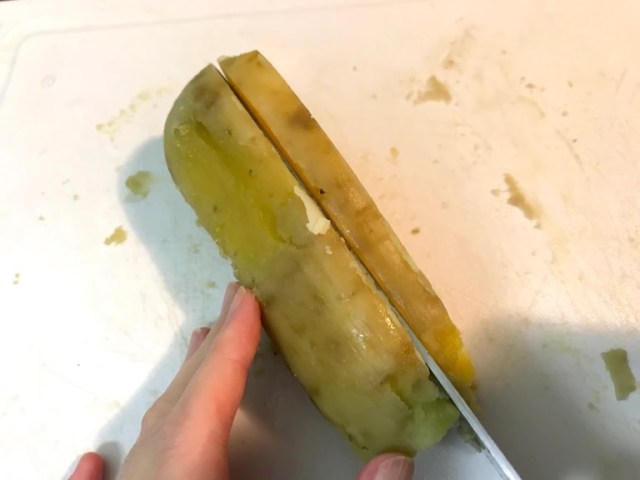

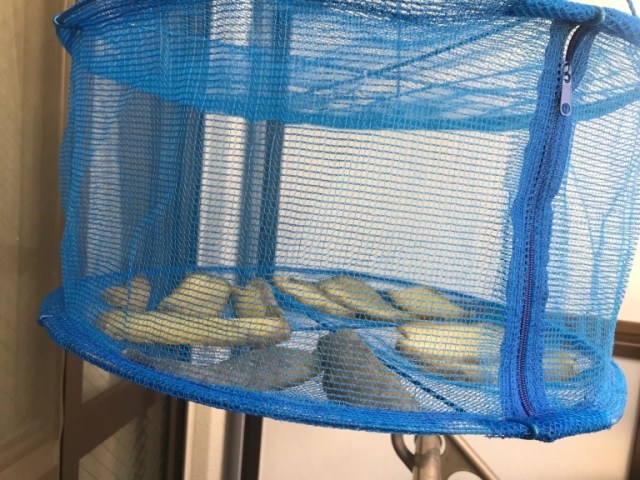
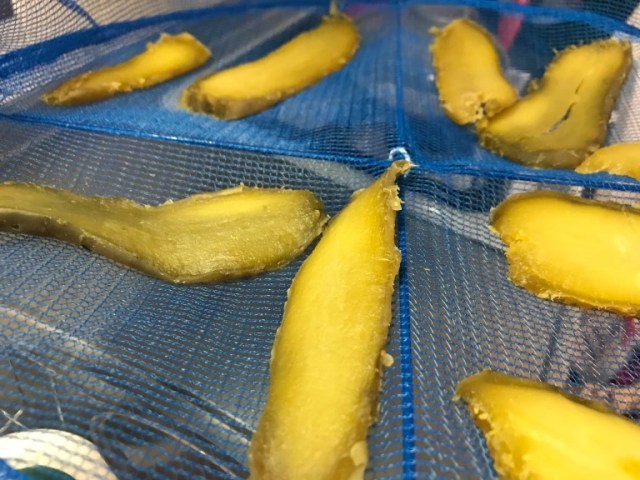
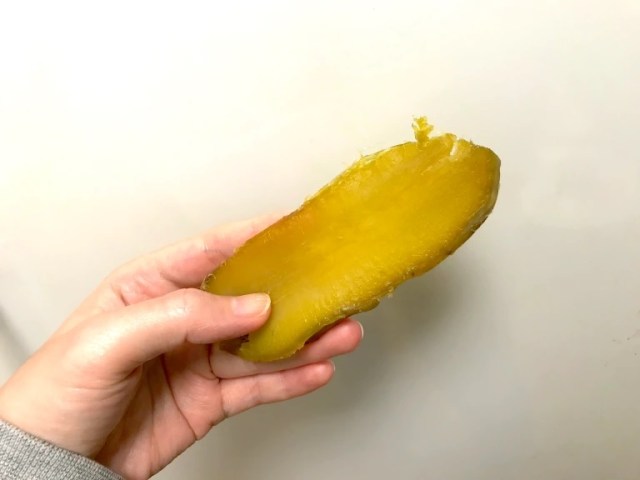
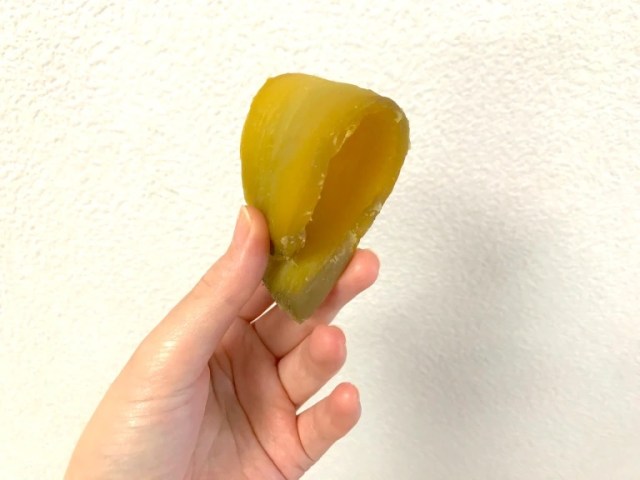
 Sweet potato sweets season arrives at convenience store Family Mart, so let’s go taste-test-crazy
Sweet potato sweets season arrives at convenience store Family Mart, so let’s go taste-test-crazy Hey! You Can Drink Sweet Potatoes, says Japanese beverage maker with new drink
Hey! You Can Drink Sweet Potatoes, says Japanese beverage maker with new drink Three of the best Japanese convenience store sweets you’ll want to try this autumn
Three of the best Japanese convenience store sweets you’ll want to try this autumn Falling into the sweet life with Japanese convenience stores’ new sweet potato sweets【Taste test】
Falling into the sweet life with Japanese convenience stores’ new sweet potato sweets【Taste test】 Weird Japanese vending machine find gives us unique sweet potato sweets
Weird Japanese vending machine find gives us unique sweet potato sweets Foreigner’s request for help in Tokyo makes us sad for the state of society
Foreigner’s request for help in Tokyo makes us sad for the state of society Anime girl English teacher Ellen-sensei becomes VTuber/VVTUber and NFT
Anime girl English teacher Ellen-sensei becomes VTuber/VVTUber and NFT Japanese city loses residents’ personal data, which was on paper being transported on a windy day
Japanese city loses residents’ personal data, which was on paper being transported on a windy day Red light district sushi restaurant in Tokyo shows us just how wrong we were about it
Red light district sushi restaurant in Tokyo shows us just how wrong we were about it Beautiful Ghibli sealing wax kits let you create accessories and elegant letter decorations【Pics】
Beautiful Ghibli sealing wax kits let you create accessories and elegant letter decorations【Pics】 Celebrate another year of life by putting it in jeopardy with this birthday candle flower
Celebrate another year of life by putting it in jeopardy with this birthday candle flower Hello Kitty isn’t a cat!? We called Sanrio to find out!
Hello Kitty isn’t a cat!? We called Sanrio to find out! Japan’s massive matcha parfait weighs 6 kilos, contains hidden surprises for anyone who eats it
Japan’s massive matcha parfait weighs 6 kilos, contains hidden surprises for anyone who eats it Sandwiches fit for a sumo served up in Osaka【Taste Test】
Sandwiches fit for a sumo served up in Osaka【Taste Test】 Starbucks reopens at Shibuya Scramble Crossing with new look and design concept
Starbucks reopens at Shibuya Scramble Crossing with new look and design concept McDonald’s new Happy Meals offer up cute and practical Sanrio lifestyle goods
McDonald’s new Happy Meals offer up cute and practical Sanrio lifestyle goods Japanese ramen restaurants under pressure from new yen banknotes
Japanese ramen restaurants under pressure from new yen banknotes All-you-can-drink Starbucks and amazing views part of Tokyo’s new 170 meter-high sky lounge
All-you-can-drink Starbucks and amazing views part of Tokyo’s new 170 meter-high sky lounge French Fries Bread in Tokyo’s Shibuya becomes a hit on social media
French Fries Bread in Tokyo’s Shibuya becomes a hit on social media Studio Ghibli releases new action figures featuring Nausicaä of the Valley of the Wind characters
Studio Ghibli releases new action figures featuring Nausicaä of the Valley of the Wind characters New private rooms on Tokaido Shinkansen change the way we travel from Tokyo to Kyoto
New private rooms on Tokaido Shinkansen change the way we travel from Tokyo to Kyoto Studio Ghibli glasses cases let anime characters keep an eye on your spectacles
Studio Ghibli glasses cases let anime characters keep an eye on your spectacles Tokyo Tsukiji fish market site to be redeveloped with 50,000-seat stadium, hotel, shopping center
Tokyo Tsukiji fish market site to be redeveloped with 50,000-seat stadium, hotel, shopping center Studio Ghibli releases Kiki’s Delivery Service chocolate cake pouches in Japan
Studio Ghibli releases Kiki’s Delivery Service chocolate cake pouches in Japan New definition of “Japanese whiskey” goes into effect to prevent fakes from fooling overseas buyers
New definition of “Japanese whiskey” goes into effect to prevent fakes from fooling overseas buyers Our Japanese reporter visits Costco in the U.S., finds super American and very Japanese things
Our Japanese reporter visits Costco in the U.S., finds super American and very Japanese things Studio Ghibli unveils Mother’s Day gift set that captures the love in My Neighbour Totoro
Studio Ghibli unveils Mother’s Day gift set that captures the love in My Neighbour Totoro New Japanese KitKat flavour stars Sanrio characters, including Hello Kitty
New Japanese KitKat flavour stars Sanrio characters, including Hello Kitty More foreign tourists than ever before in history visited Japan last month
More foreign tourists than ever before in history visited Japan last month New Pokémon cakes let you eat your way through Pikachu and all the Eevee evolutions
New Pokémon cakes let you eat your way through Pikachu and all the Eevee evolutions Sales of Japan’s most convenient train ticket/shopping payment cards suspended indefinitely
Sales of Japan’s most convenient train ticket/shopping payment cards suspended indefinitely Sold-out Studio Ghibli desktop humidifiers are back so Totoro can help you through the dry season
Sold-out Studio Ghibli desktop humidifiers are back so Totoro can help you through the dry season Japanese government to make first change to romanization spelling rules since the 1950s
Japanese government to make first change to romanization spelling rules since the 1950s Ghibli founders Toshio Suzuki and Hayao Miyazaki contribute to Japanese whisky Totoro label design
Ghibli founders Toshio Suzuki and Hayao Miyazaki contribute to Japanese whisky Totoro label design Doraemon found buried at sea as scene from 1993 anime becomes real life【Photos】
Doraemon found buried at sea as scene from 1993 anime becomes real life【Photos】 Tokyo’s most famous Starbucks is closed
Tokyo’s most famous Starbucks is closed One Piece characters’ nationalities revealed, but fans have mixed opinions
One Piece characters’ nationalities revealed, but fans have mixed opinions We asked a Uniqlo employee what four things we should buy and their suggestions didn’t disappoint
We asked a Uniqlo employee what four things we should buy and their suggestions didn’t disappoint Princesses, fruits, and blacksmiths: Study reveals the 30 most unusual family names in Japan
Princesses, fruits, and blacksmiths: Study reveals the 30 most unusual family names in Japan Sweet! Mister Donut’s sweet potato donuts are here to get us into the autumn dessert mood ASAP
Sweet! Mister Donut’s sweet potato donuts are here to get us into the autumn dessert mood ASAP Cheap paradise: Daiso’s microwave potato chip maker is healthy, easy, and delicious【Taste test】
Cheap paradise: Daiso’s microwave potato chip maker is healthy, easy, and delicious【Taste test】 We crunch into autumn with Starbucks Japan’s new Crispy Sweet Potato Frappuccino【Taste test】
We crunch into autumn with Starbucks Japan’s new Crispy Sweet Potato Frappuccino【Taste test】 New coffee-flavored potato chips “taste like chaos”
New coffee-flavored potato chips “taste like chaos” These super thick, extra-crunchy potato chips are the answer to your salty snack cravings
These super thick, extra-crunchy potato chips are the answer to your salty snack cravings Koikeya giving snackers a chance to compare chips made from potatoes in 3 Japanese regions
Koikeya giving snackers a chance to compare chips made from potatoes in 3 Japanese regions Japan has a special foil for roasting sweet potatoes at home, and it’s like having a time machine
Japan has a special foil for roasting sweet potatoes at home, and it’s like having a time machine Japanese potato chip maker to sell potato-growing kits
Japanese potato chip maker to sell potato-growing kits We make chocolate-covered potato chips
We make chocolate-covered potato chips Japanese netizen moves into new apartment, gets greeted by shriveled surprise in the oven【Pics】
Japanese netizen moves into new apartment, gets greeted by shriveled surprise in the oven【Pics】 French fry war escalates with a 300-percent larger Bucket Potato from Ministop convenience stores
French fry war escalates with a 300-percent larger Bucket Potato from Ministop convenience stores Put your washing machine to better use – cook Chinese soup with it!【Video】
Put your washing machine to better use – cook Chinese soup with it!【Video】 Japan’s Mini Stop rolls out “Addictive Kitchen” hash browns to satisfy Japan’s “potato refugees”
Japan’s Mini Stop rolls out “Addictive Kitchen” hash browns to satisfy Japan’s “potato refugees” Starbucks new CRISPY Japanese sweet potato Frappuccinos have us ready to fall in autumn love
Starbucks new CRISPY Japanese sweet potato Frappuccinos have us ready to fall in autumn love Japanese convenience store’s sweet potato dessert drinks and coffee may have you skip Starbucks
Japanese convenience store’s sweet potato dessert drinks and coffee may have you skip Starbucks
Leave a Reply